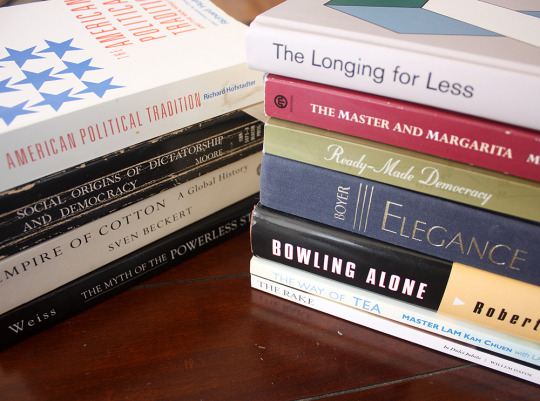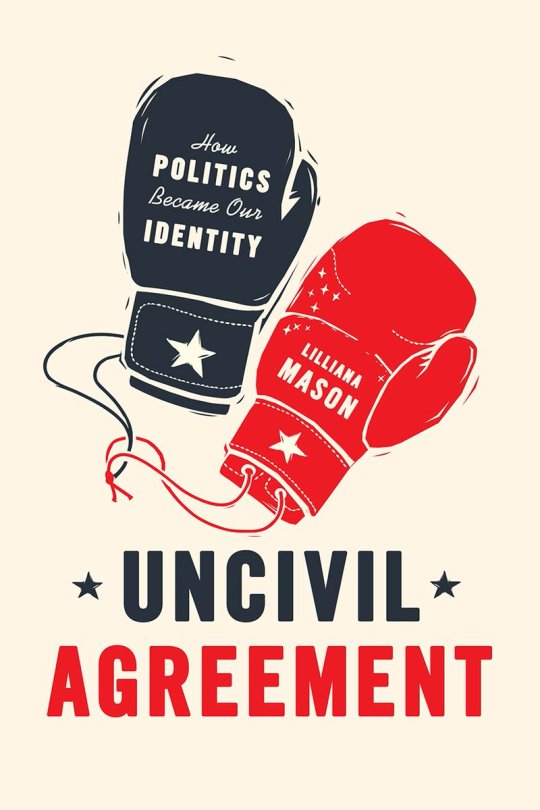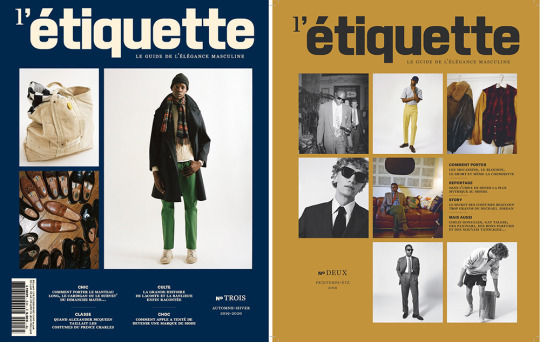
By now, you’re probably buried in reading recommendations, Spotify playlists, and suggestions for films you can watch on Netflix. Well, let me add a few more to the pile. As millions of people across the United State and abroad are subject to stay-at-home orders, outlets have been busy publishing ideas on what you can do to bide the time. The two most creative stories I’ve read come from isolation experts – Scott Kelly, a retired NASA astronaut who spent a year in outer-space, and Billy Barr, who has been living alone in an abandoned silver mining town for almost fifty years (both agree you should follow a schedule). Over at StyleForum, my friend Peter published a list of things you can read, watch, and eat (other than despair over the news). Peter has better suggestions if you want something closely related to men’s style, but if you’re looking for other ways you can settle in at home, here are some of my favorite films, cooking shows, songs, and books. Hopefully, you can find something here to distract you.
SOMETHING TO WATCH
Crip Camp: The latest Barack and Michelle-Obama produced Netflix documentary, Crip Camp, is a rousing and rare look at the disability rights movement. The film is about a group of young teens who attended a Catskill summer camp for the disabled in the 1970s, where they bonded over mealtimes and warm-weather flings. For camp attendees who usually feel excluded because of their conditions, this gathering was a bastion of acceptance and community. It also helped spark a movement. Coming out of the camp, many attendees went on to become nationally visible disability rights activists. Ultimately, this is a film about inclusion, intersectionality, and how inspirations found during one’s youth can lead to world-changing results. If you need a break from all the bad news, this feel-good story will make you optimistic about the future.
Chungking Express: While taking a two-month break from filming Ashes of Time (which is a terrible movie), Wong Kar-Wai roughly cobbled together an art-house film called Chungking Express (which is a terrific movie). The film is split into two stories that are told in sequence. The first half is about a lovesick detective (Takeshi Kaneshiro) who has a run-in with a mysterious drug smuggler (Brigitte Lin). The second is about a quirky snack-bar worker (Faye Wong) who plays tricks on a handsome police officer (Tony Leung). Chungking Express has a freewheeling, frenetic tempo that’s inspired by French New Wave cinema, and it’s visually stunning. At a 1995 film screening for Chungking Express at the UCLA campus, Quentin Tarantino confessed that he cried while watching this on video, not because the story is sad, but because he’s “just so happy to love a movie this much.”
In the Mood for Love: For something just as visually arresting, check out In the Mood for Love, which is also by Wong Kar-Wai. In terms of tempo, In the Mood for Love is the opposite of Chungking Express. It’s excruciatingly slow and almost nothing happens in the film. But it beautifully captures the tension between two people who are attracted to each other, yet say nothing. The film’s colorful filters and stunning reflections make you feel like you’re glancing up at someone else’s private moment. Plus, for people passionate about clothing, the film’s costume design is nothing less than spectacular. If you’re attentive to style, nearly every film by Wong Kar-Wai will work for you. However, if you’re mostly interested in storylines, you may find his work frustrating. Still, these two films are a must-watch for cinephiles.
Kid Dandy: Finally, for something more directly related to style, my friend Gianluca Migliarotti has put up a small selection of his films for viewing on Vimeo. You can rent them as a 24-hour only, online streaming service for the low price of $2, and all the money will go to COVID relief efforts. Gianluca, as many know, is the director behind O’Mast and one of the two men behind Pommella. His film O’Mast covers the art and beauty in Neapolitan tailoring, while E poi c’è Napoli is about the city of Naples itself. You can also rent Driving Dreams, which is about automobile design. Two bucks nowadays won’t even get you a candy bar or a cup of coffee, but here you can watch a beautifully shot, hour-long film and know that you’re contributing to a good cause.

SOMETHING TO EAT
About eleven years ago, a friend of mine’s cousin started filming his grandmother, Clara Cannucciari, for a roughly produced YouTube cooking show. At first, his shy grandmother was reluctant. She was, after all, a 91-year-old woman who led a private life, and she couldn’t quite grasp the idea of online video streaming. “Is it like cable?” her grandson Chris remembers her asking. But the two struck a deal. Chris could film her on the one condition that he produce a portrait of her that she could use at her wake. So Clara sat down for a portrait and Chris photographed her, and she liked it. “Fine,” she relented, “you can film me.”
The resulting show, titled Great Depression Cooking, turned Clara into one of YouTube’s earliest celebrities. In each installment, Clara slowly, but deliberately, shuffles through her kitchen as she prepares a meal she remembers from her time growing up during the Great Depression. As she gathers and cooks the ingredients, you can see her disappear behind a memory as she talks about the recipe and what it means to her. Her stories, in some ways, give a glimpse into what life was like during one of America’s bleakest economic chapters. In the episode where Clara prepares a homemade pizza, she talks about how she remembers when her family first encountered electric lights. In an episode about pasta, Clara simmers onions and potatoes together to make a meager, but filling sauce that she combines with rigatoni and canned peas. While cooking, she cracks a sly smile and looks back at the camera. “That’s all we did, eat pasta with a vegetable.”
Clara’s show is wonderful for many reasons. Her warm and charming personality shines through in every episode, as does her sardonic wit. There’s also something oddly calming about Clara’s manner of speaking and the show’s predilection for repetition. Clara opens every episode with: “Welcome to my kitchen. I’m Clara; I’m 91 years old. Today we are making meals from the Depression.” And while cooking is just an excuse to hear this Italian-American grandmother talk, I also appreciate that these are things I can cook. Online, you can find thousands of recipes that promise to be simple, but involve whisks, baking sheets, and knowledge of words such as broiled and braised. I’ll be honest with you, dear reader: I can barely make an omelette. But Clara’s recipes are genuinely simple and easy to whip up — sometimes involving nothing more than stirring together sugar, eggs, and flour for a morning treat. Best of all, the dishes are affordable, which is something many of us can appreciate in these uncertain economic times.

SOMETHING TO LISTEN TO
When I was young, I liked hanging out at my local college radio station, where I was friends with a few people. College stations are strange places. They’re full of eccentric people who are volunteering their time out of passion, not because they’re getting paid, and the rooms are always packed with dusty crates full of obscure records. I’m also fond of college radio because the stations typically give their hosts freer reign over what they’re allowed to play, especially late at night. This means a host can mix blues, funk, and soul, and maybe even combine deep cuts with pop oldies. The only requirement is that the song has to make you move.
While constructing this playlist, I thought about sticking to jazz classics, which almost everyone finds pleasant, if not at least inoffensive. But in the end, I went for that college radio vibe. There’s a mix of Spanish Harlem boogaloo, Memphis soul, East Bay hip hop, German funk, and the hardest hitting obo you’ll ever hear (that’s the Yusef Lateef track). Hopefully, you’ll find a track or two that you can add to your regular rotation. You can find my playlist at Spotify.

SOMETHING TO READ
Elegance: If you enjoyed Bruce Boyer’s True Style, pick up a copy of his 1985 book Elegance. It’s a collection of short essays, which weave together elements of history, culture, and men’s dress, showing how all these things are interconnected. It’s also beautifully written, as you’d expect from Bruce Boyer.
The Rake: The Rake, which is a sponsor on this site, has generously put their back catalog up for reading for free at Zinio. You can access issues 6 through 67 through your web browser, or by using Zinio’s IOS app. Goes without saying, I like the issue with Ralph Lauren. Note, you will need to sign up for a Zinio account to see the content.
Bowling Alone: Bowling Alone is the culmination of a series of research papers by Harvard professor Robert Putnam, who looked at whether Americans are becoming more disconnected from one another, and what that may mean for our democracy. Through his work, Putnam has helped pioneer the idea of social capital, which has become a powerful analytical concept in the fields of sociology, political science, and economics. A must-read for anyone who often thinks about community or civic life.
The Way of Tea: Why drink bad tea when you can drink good tea? Chuen Lam’s The Way of Tea will take you through the different tea varieties and show you how to brew a better cup. I get my leaves from Far Leaves and Eco-Cha, but you can also visit your local Chinatown tea shop (get loose leaf tea, not bagged).
The Master and Margarita: One of the best novels ever written. This satirical dark comedy involves Satan masquerading as a professor, as well as his mischievous, demonic black cat. Written during Stalin’s regime, some believe it was initially censored because it was critical of the Soviet government.
Ready-Made Democracy: Michael Zakim’s Ready-Made Democracy draws the link between developments in men’s dress during the antebellum period in America and the emergence of modernism. Zakim shows how the suit represented capitalism’s promise of plenty and the democratic ideal of equality. At the same time, the shift from domestic production to ready-to-wear was part of a larger transformation in America’s social and industrial landscape – the standardization of production, “single price” system, reorganization of waged labor, among other things. A wonderful read that shows the linkages between ideology, political economy, and fashion, as well as how clothing is inextricably linked to the construction of modern life.
Longing for Less: Kyle Chayka is a talented writer who covers various beats — consumer culture, modern life, and art. In the last few years, he’s written about the minimalist trend for various leading publications, which has led to his book Longing for Less. Chayka goes into minimalism’s spiritual and philosophical origins, as well as how it has manifested in the worlds of art, music, and architecture. I appreciate how Chayka views his subject with a critical, but never cynical, eye. In the end, he reminds us that what we need most is presence, not absence.


L’Étiquette: L’Étiquette is one of the coolest menswear magazines around at the moment. It mixes traditional tailoring with streetwear, and presents classic men’s clothing in a way that doesn’t feel stuffy, but rather open and accessible. I like that it’s just about nice clothes. At the moment, you can download three of their issues for free on their website. The only downside is that all the text is in French, but even if you can’t read the articles, the photos are great.
Social Origins of Dictatorship and Democracy: Using what’s known as the comparative method, Barrington Moore examines the three routes to modernization during the 20th century: liberal democratic, fascist, and communist. Roughly speaking, the book’s thesis can be summed up by the phrase “no bourgeois, no democracy,” which is an idea that still shapes many scholars’ thinking today. This is a dense read, but a good one for those who are interested in politics and modernization.
Empire of Cotton: Winner of the 2015 Bancroft Prize and a finalist for the Pulitzer in History, Empire of Cotton is a fantastic look at the fiber that’s probably on your back right now. Written by Harvard professor and historian Sven Beckert, it shows how each stage of the fiber’s industrialization depended on violence. And instead of the myth of free-market enterprise, this industry’s expansion was only made possible by government intervention. Like all good scholarship, Beckert uses a small case study to illuminate something bigger. Here, the history of cotton is a way to understand how the present-day global economy came to exist.
The American Political Tradition: Since it’s an election year in the US, why not revisit this landmark book by Richard Hofstadter, which is often assigned to undergrads taking Intro to American Politics? Through a collection of twelve essays, Hofstadter shows how American politicians have always sided with capitalist order, rather than democratic equality. And yet, as the historian C. Vann Woodward said at Hofstadter’s memorial, while the Hofstadter was “critical of many aspects of American life, he never joined the fashionable cult of anti-Americanism.” The American Political Tradition strips away at many of our national myths and replaces them with hard history.
The Myth of the Powerless State: As the most academically geared book on this list, The Myth of the Powerless State is heavy with citations, jargon, and dense concepts. It can be challenging to get through, but it’s also a good book for pushing past outdated notions of socialism, capitalism, and libertarianism. Popular discussions around these issues often feel like they’re stuck in the 1960s, which have been orthogonal to what’s been going in academic research for decades. There’s a rich literature showing how states and the economy are interlinked, rather than at odds with each other. If you’re interested in such work, check out Linda Weiss’ The Myth of the Powerless State, Gøsta Esping-Andersen’s The Three Worlds of Welfare Capitalism, or David Soskice and Peter A. Hall’s Varieties of Capitalism.
Uncivil Agreement: Why is America so polarized today? Yes, material politics and inequality have something to do with it, as does the tenor coming out of the White House. But there’s also a growing body of research that shows how social identity is driving a lot of rancor. In her book Uncivil Agreement, Lilliana Mason looks at what happens if we apply social identity theory to American politics. She shows how political labels are often more meaningful to people than actual policy preferences. Pair this book with Donald Kinder and Nathan P. Kalmoe’s Neither Liberal Nor Conservative and Christopher Ellis’ Ideology in America, which follow up on Philip Converse’s landmark 1964 text The Nature of Belief Systems in Mass Publics. In all these books, the authors show the importance of identity in driving political views. Mason also talks about her work on Ezra Klein’s podcast. A warning: the conclusions are discouraging, but we can take hope in knowing that we as individuals can act better.
